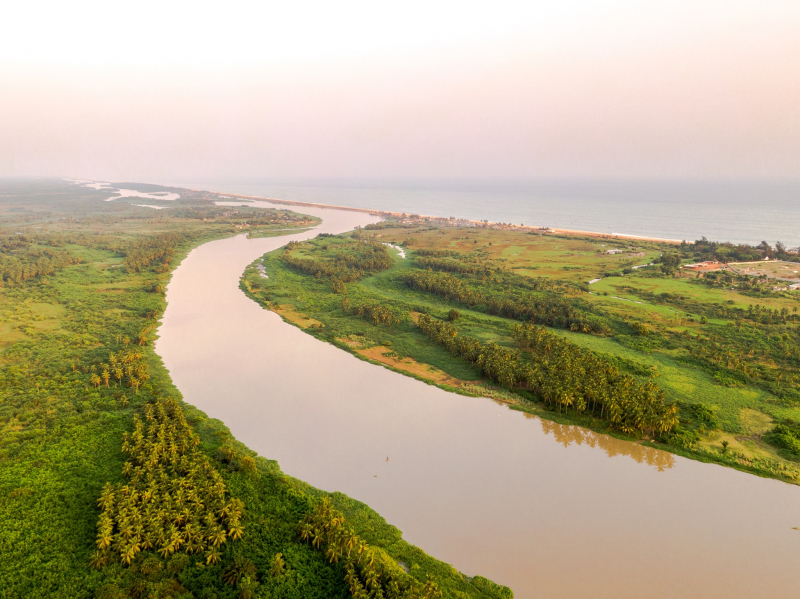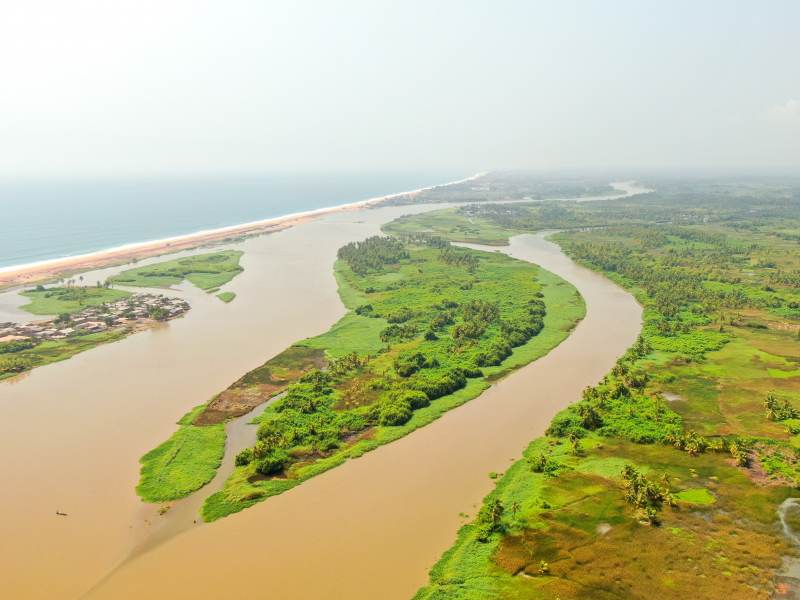Mono River

Mono River rises between the town of Sokodé and the border with Benin, and flows south. It is about 400 km (250 mi) long and drains a basin of about 20,000 km2 (7,700 sq mi). The river forms the international border between Togo and Benin along its southern course, all the way to its mouth. The river flows into the Bight of Benin via a vast network of brackish water lagoons and lakes, including Lake Togo. Only the section of the river closest to the mouth is navigable. The upper tableland of the river's basin is primarily cultivated for maize, yams, rice, cotton, and cassava.
The Nangbeto Dam, built in collaboration between Benin and Togo and completed in 1987, dams the river 160 kilometers (99 miles) from its mouth. According to studies, the dam has economic benefits such as tourism and fishing in the lake behind it. The dam's construction, on the other hand, displaced between 7,600 and 10,000 people, and studies show that it has significantly altered the ecology of the lagoon system at the river's mouth by reducing the natural seasonal fluctuations in river flow. Adjarala Dam, a second dam project proposed for the river between Nangbeto and the river's mouth in the 1990s, did not receive funding until 2017, when the China-Africa Development Fund agreed to support the project. The dam's construction is part of the government's plan to increase Benin's domestic power generation capacity from 20% to 70%, as most of Togo and Benin's electricity is currently imported from Ghana's Akosombo Dam.
There are six rapids about 35 kilometers (22 miles) from its mouth. Below this point, the river slows and flows over a swampy floodplain, with a large area of contiguous wetland in both Togo and Benin. The river is home to manatees, crocodiles, and hippopotamus, as well as a dense growth of reeds, sedges, and grasses.
Length: 400 km (248 mi- shared with Togo)





